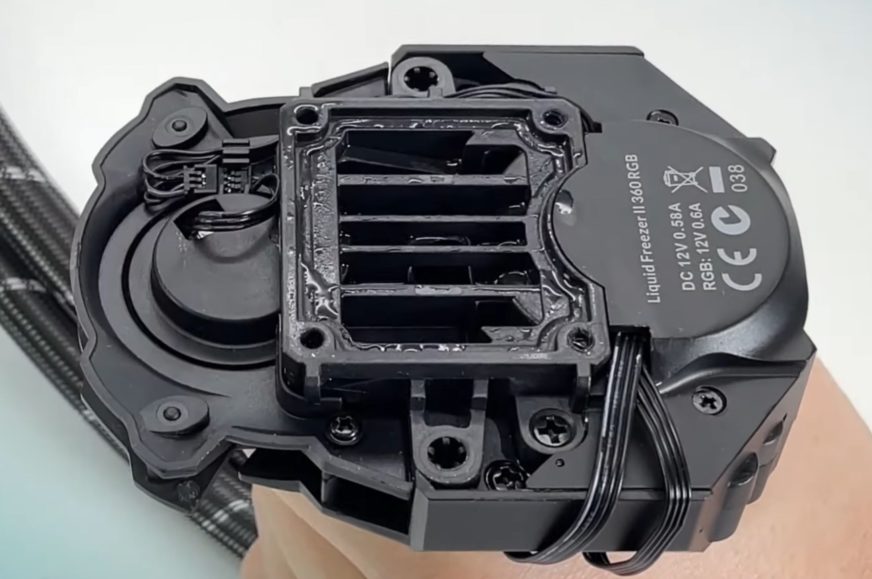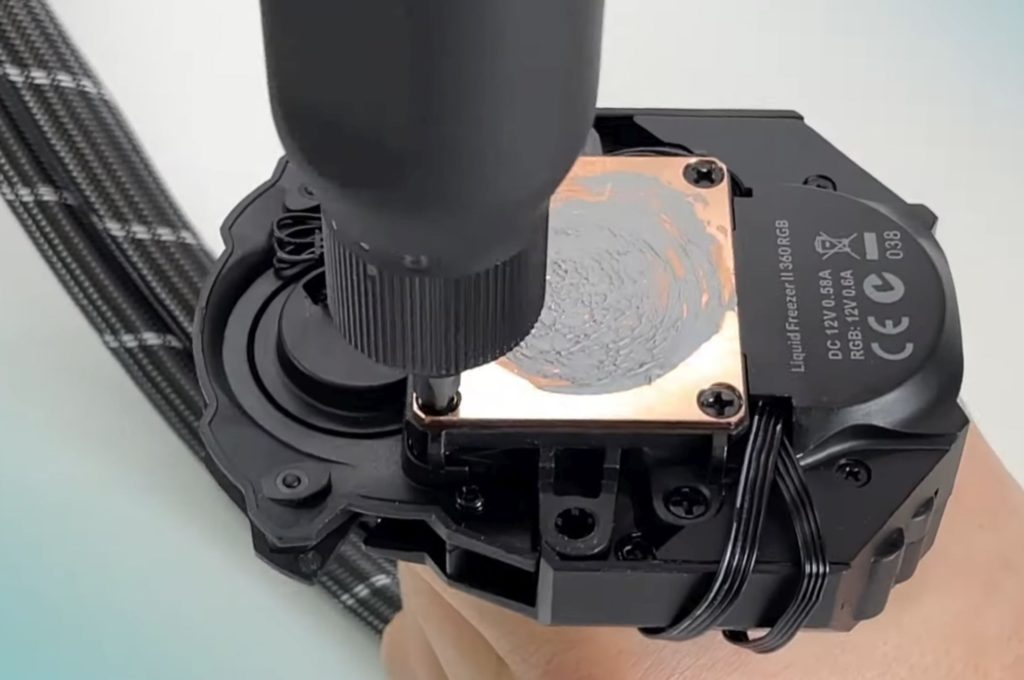The seals of some Freezer II AIO coolers degrade over time
In Arctic, critical errors are not covered up. At least recently. In the span of a few months, the company has already disclosed a second possible flaw in its product design.After the MX-5’s thermal paste drying up, it’s now about the crumbling seals of some Liquid Freezer II AIO coolers for a change. The pro-consumer behavior is commendable, with Arctic doing everything it can to make things right.
Liquid Freezer II coolers manufactured between May 2021 and March 2022 come with faulty seals. Arctic reportedly figured this out during a quality check. It is that the seal used between the copper block and the rest of the cooler is not sufficiently vulcanized resulting in a relatively low durability.
Thus, chemical reactions result in the release of material which, on the one hand, reduces performance over time (by deposits with clogging of microchannels inside the block) and, in worse situations, there is also the risk of fluid leakage. Either way, the cooling performance is gradually reduced, which is always undesirable. If very powerful processors don’t start to overheat, this degradation will at least increase the operating noise.
Arctic points out that there is no need to panic and that this is a long-term process. In the 15 months that these batches of Liquid Freezer II coolers have been in circulation, there doesn’t seem to have been any dramatic deterioration even with heavy use. Either way, during the long 6-year warranty, some changes in performance are bound to occur and instead of risking mass claims, Arctic has decided to step in and send you a service kit free of charge upon request. This includes a copper block, a properly vulcanized seal, a bottle of additional fluid, a small (0.8 g) packet of MX-5 thermal paste and screws.
You will only need a screwdriver to replace the original parts ( seal and copper block). The task is really simple and requires no specialist knowledge or skills. Although for the user who has no experience with screwing, it is good to note that the screws should be tightened alternately by a couple of threads and the first pair going in should be on the opposite corners, splitting the copper plate diagonally down the middle. Arctic filmed the whole process in a striking video. You can send your service kit request via the form on the Arctic website.
Coolers with failing seals should no longer be in stores, Arctic has pulled them from sale. Still, there may be some pieces left in stock somewhere. That’s why Arctic marks coolers with replaced, properly vulcanized seals with a “QC Passed” sticker.
The Arctic MX-5 thermal pastes and now Liquid Freezer II coolers, have encountered reservations in the product control quite recently, but the highly serious approach deserves praise. Arctic seems to have moved forward in that direction. It wasn’t always the case. Think of the Freezer 33, which dropped significantly in performance from a certain load in the vertical position (while in the horizontal, with the board horizontal, everything was fine). Arctic dealt with this more quietly. We also covered the Liquid Freezer II in our tests.
English translation and edit by Jozef Dudáš













